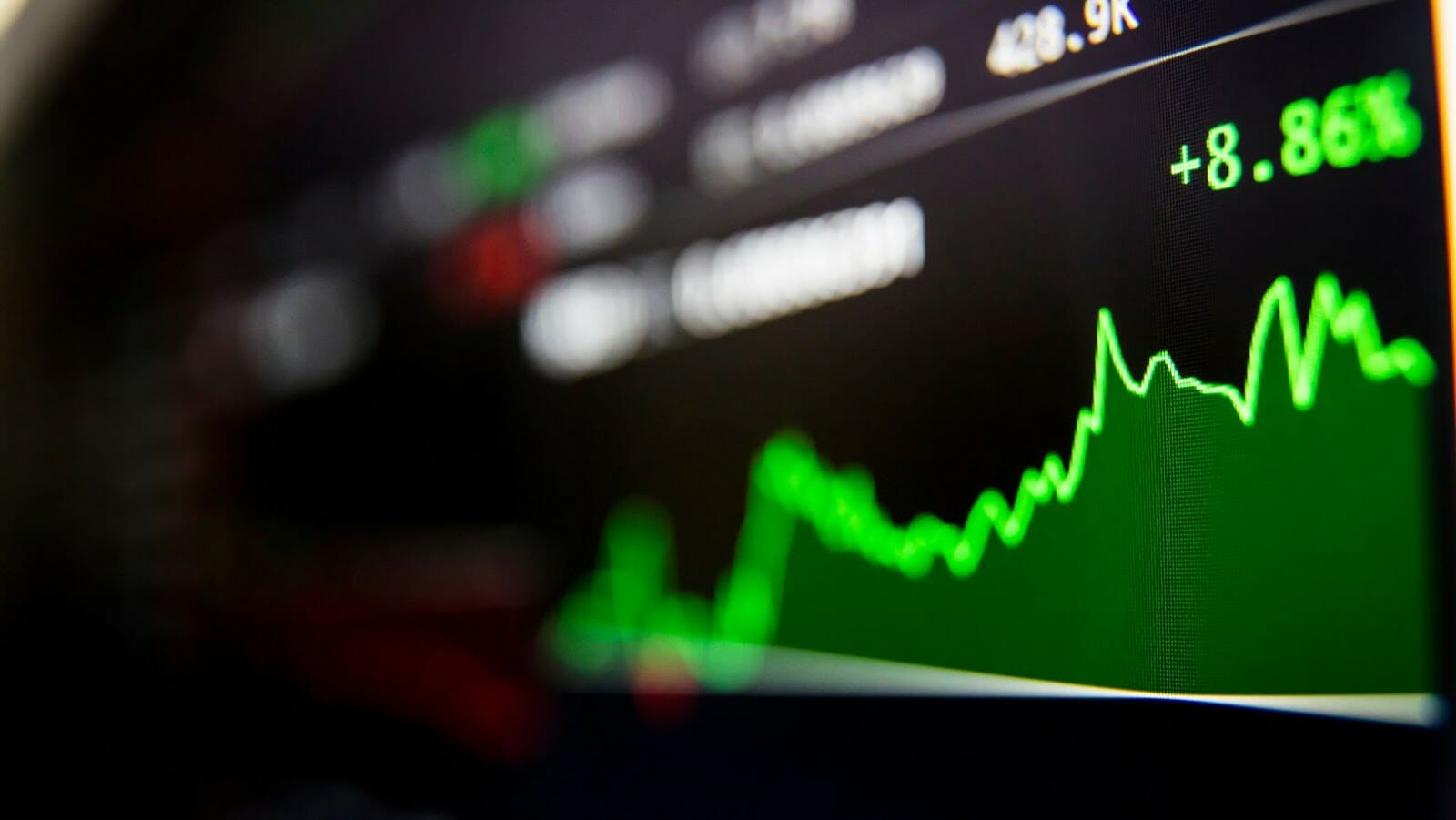Robinhood is an American commission-free, brokerage firm specialised in stocks, options and cryptocurrency trading. In 2018, the platform was criticised for allowing users to trade with borrowed funds which can lead to excessive and reckless speculation. As well as providing their customers with the opportunity of commission-free trading, Robinhood also makes money from the payment for order flow (PFOF).
How Robinhood Financial & Robinhood Crypto Make Money
The Payment for Order Flow acts as a rebate system where intermediaries receive payment in exchange for routing orders to certain venues. As a result, payment for Order Flow is disproportionately high on stocks that move quickly or have a high volume of trades – such as what are found on the Robinhood Platform. This positive revenue stream enables Robinhood to offer their platform free trades and commission-free transactions.
Although this cost does not appear to the investor’s mindset, it drives the revenue of brokerages such as Robinhood Financial and Robinhood Crypto. The key concepts involved in understanding how PFOF works are:
- Liquidity provisioning
- Order types
- Market makers and takers
- Last look policy
- Generic rebates & incentives versus payment for order flow priority access
- Execution quality reporting (EQR)
- Direct market access (DMA)
This tutorial provides full insight into these concepts by exploring how Robinhood Financial and RobinHood Crypto handle them to generate profits from payments for order flow.
What is Payment For Order Flow?
Payment For Order Flow (PFOF) is a term used to describe how brokerages like Robinhood Financial and Robinhood Crypto make money. This is done by routing customer trades to a third-party execution firm, which pays the brokerage for the trade.
This payment allows brokerages to make money without charging commissions for order execution. This article will explain what Payment For Order Flow is and how Robinhood makes money from it.
Definition
Payment for Order Flow (PFOF) is a practice in which online brokers, such as Robinhood, provide third-party firms with customer instructions to fill trades and receive payment for those instructions. This allows the broker to provide a lower cost for trading for the customer. In other words, instead of taking a piece of the spread like other online brokers, Robinhood receives payments from outside organisations to execute orders on their behalf.
The payments are made based on the price improvement achieved by routing orders away from exchanges to certain market makers and off-exchange specialists who generally offer those discounts. The result is that these third-party organisations will benefit from improved prices or rapid execution speeds which they then pay Robinhood a fee in return. While brokerages have used PFOF since 2000, it has grown increasingly popular over recent years due to reduced commissions, including zero commission services at some places like Robinhood Financial & Robinhood Crypto.
Notably, regulators have expressed concern over this practice as it could be perceived as limiting customer choice by prioritising payments received over best execution when making consumer routed orders. As a result, further scrutiny of these third-party firms must also be considered before executing trades through any intermediary organisation offering PFOF services.
How It Works
Payment for order flow is a system where a brokerage firm like Robinhood can collect money from market makers and other financial institutions in exchange for routing customer orders to them. These payments are typically made to the brokerage firm in cash, but can also come as credits for services such as data or software.
How does this work? When an investor places an order to buy or sell a stock on Robinhood, that order is sent out to a range of different market makers who will then either execute the trade directly with them (in the case of a buy) or provide liquidity via an order book (in the case of a sell). In exchange, Robinhood collects those payments from these participating firms.
The payments are typically based on the volume of trades being executed and/or any profits generated by executing those trades. This allows Robinhood to make money without charging their customers any trading fees or commissions. It also incentivizes market makers to provide rapid execution times and make deeper markets available, creating more investor opportunities.
Ultimately, this system helps keep trading costs low while providing liquidity, which helps improve investor outcomes overall.
How Robinhood Makes Money From Payment For Order Flow
Robinhood Financial and Robinhood Crypto make money through Payment for Order Flow (PFOF). In this process, the Robinhood platform collects payments from market makers in return for sending them customer orders.
In this article, we’ll discuss Payment for Order Flow and how it benefits Robinhood.
Robinhood Financial
Robinhood Financial is the brokerage arm of Robinhood. It makes money through Payment for Order Flow (PFOF) and other traditional brokerage fees, such as Margin Loan Interest, Extended Hours Trading Fees, and Cash Management Fees.

Payment for Order Flow (PFOF) is one of Robinhood’s most controversial practices. It refers to sending customer orders to high-frequency trading firms, who pay Robinhood a “payment” in exchange for the order volume. The trading firms then execute the trades on behalf of their customers or take action in the market. This “payment” is a commission Robinhood charges for routing customer orders to these trading firms. Since PFOF does not require any action on the part of Robinhood itself, customers do not pay additional fees for this service; however, since customers are not necessarily receiving best-execution quality on their trades, some have argued that these payments constitute kickbacks from HFTs to brokerages like Robinhood in exchange for making sure that their orders are placed first, or at least as soon as all other orders are confirmed.
Alternatively, Robinhood also makes money through traditional brokerage fees such as margin loan interest when customers take out a loan-to-buy securities with extra leverage; extended hours trading fees when customers extend their sessions after hours; and cash management fees when customers deposit more than $1k into cash management accounts through nominee custodians. In addition, these brokerage services are subject to standard market rate commissions which cover Ross’ overhead costs while helping them generate profit.
Robinhood Crypto
Robinhood Crypto charges zero commission for trading a wide range of digital assets. This is possible due to their agreements with market makers to provide liquidity, large or small. These firms, known as Payment for Order Flow (PFOF) providers, fill customer orders in exchange for commissions.
When a Robinhood Crypto Investor places an order, they agree to the terms of the Execution Services Agreement (https://cryptohelp.robinhood.com/en-us/legal/crypto/) which details the agreement between them and Robinhood Markets Inc., as well as Coinbase & Other Third Parties and their respective market makers. Robinhood states:
“We transmit your order information to our partners at Coinbase and other third parties who provide us with liquidity services (usually called ‘payment for order flow’). These partners fill your orders from the available inventory of digital assets they have and receive remuneration from us in return for providing those services and filling your cryptocurrency orders quickly and efficiently”
How payment for order flow works is simple – Robinhood collects money from PFOF providers in exchange for routing customers’ orders to them, rather than an execution venue like a stock exchange or dark pool. The money received is typically a small percentage of the executed trade value, called tick size payment; it can range from 0-0.30%. All tick size payments are disclosed (https://[email protected]/en-us/legal/) within contracts whenever applicable.
Potential Risks
The potential risks of using Robinhood for financial and crypto trading should be carefully considered before investing. One of the most significant risks is the potential for Payment For Order Flow (PFOF).
This is the common practice of routing customer trades to market makers who pay Robinhood a small fee in exchange for this service. In this article, we will look into how Robinhood makes money from Payment For Order Flow and its associated risks.
Market Impact
Payment for order flow (PFOF) can also have direct and indirect implications on the markets. For example, when firms are paid for their order flow, they may route orders to venues with better prices, disregarding the best execution of their clients’ orders. This means their orders might not be executed at the best price, leading to poorer client results. When such a situation arises, these firms can be held liable in legal proceedings initiated by their clients.
Aside from this legal risk, PFOF can also create market instability due to changes in liquidity conditions or lead to information leakage if market makers have time-sensitive knowledge of client orders received through PFOF agreements with brokers. Furthermore, large-scale routing decisions based on PFOF can lead to inefficient prices or pricing anomalies because profitable opportunities are taken away from institutional investors and other participants in the market who otherwise would take advantage of them if there were no rebates and fees associated with PFOF arrangements. Finally, conflicts of interest between broker-dealers involved in PFOF agreements and customers’ interests should also be considered.
Regulatory Impact
With the rise of “pay-for-order flow,” increasing questions have been raised regarding the potential risks that payment for order flow arrangements may pose to investors. Additionally, there has been much scrutiny over the pricing and related risks associated with these arrangements. Both the SEC and FINRA have rules that apply to these arrangements. Hence, firms must understand how Robinhood Financial & Robinhood Crypto makes money from payment for order flow and how best to comply with all applicable regulations.

The SEC has rules in place that generally require firms engaging in payment for order flow arrangements to:
- Maintain reasonable procedures regarding compensation given or received for routing orders.
- Make sure that clients are obtaining competitive prices when their orders are placed.
- Ensure that customers receive full disclosure about the nature of market centres receiving their orders.
- Establish procedures for preventing discrimination among customers in terms of access or quality.
Moreover, FINRA Rule 5310 states that firms should disclose clearly and prominently any information concerning payments received by or paid on behalf of their firm by external brokers such as wholesalers, market makers, trade desks, etc., including the reason why they were paid.
In addition to complying with applicable regulations, firms should also be mindful of other potential risks associated with payment for order flow arrangements. For example, changes in regulatory standards have made it more difficult to process securities transactions at traditional financial institutions due to increased risk and new obligations surrounding disclosure and compliance requirements. As a result, some firms have turned towards alternative liquidity providers such as high frequency trading firms (HFTs). However, HFTs typically employ sophisticated algorithms using sophisticated software packages which can generate poor execution quality resulting in adverse selection costs.

Furthermore, unsophisticated investors may not appreciate HFTs’ ability to ramp up trading volumes rapidly due a lack of understanding the complex strategies employed by these entities. Thus it is important for companies such as Robinhood Financial & Robinhood Crypto engaging in this type of business model to understand all potential legal liabilities or other threats encountered along every step if they plan on monetizing from payment for order flow activities.


More Stories
From Zero to Seen: A Simple Music Promo Plan for New Artists
From NFTs to SFTs: Exploring the Next Evolution of Digital Tokens
Play Privately and Securely: Most Anonymous Casinos of 2025